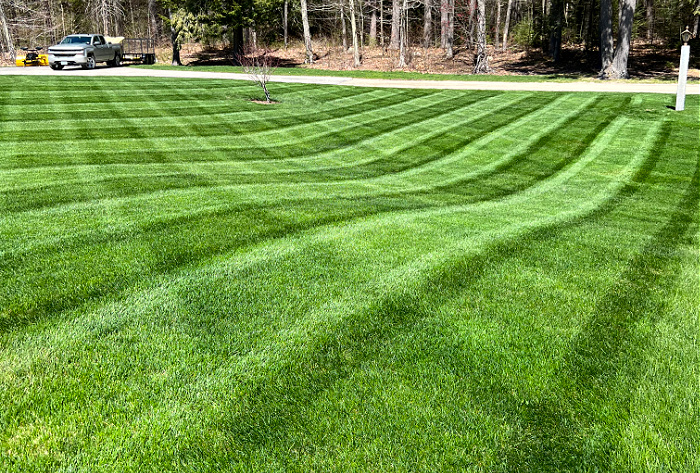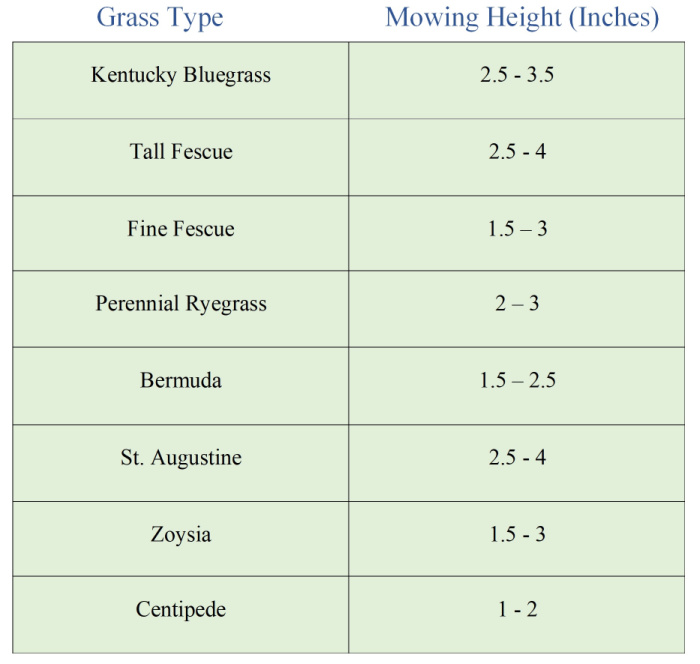Lawn Mowing Tips – Plant for Success
Lawn mowing is very important to the overall health of your lawn. Follow these lawn mowing tips to keep grass healthy and well maintained.

Fire up the mower, mow the lawn, and then repeat next week. It seems so simple right? The truth is, so many homeowners get lawn mowing all wrong. Proper mowing is one of the most important parts of a solid lawn care program. Luckily, it’s not that hard to break some bad habits and clean up your strategy. Follow these Lawn Mowing Tips to help you maintain a healthy lawn.
Lawn Mowing Tips
1. Sharp Blades– I get it, sharpening your mower blade, or blades, is kind of a pain in the butt. But having a sharp blade is so important. Instead of tearing your lawn with a dull blade you want to get a nice clean cut so the grass can heal quicker and seal over the fresh wounds. If there is a ripped edge it makes the grass blade more vulnerable to disease and pests. It also creates a brown appearance along the top of the grass which will prevent you from getting that green uniform pop in color. The best tool for sharpening your blades is a small bench grinder, but you can also use a file.
2. Mow on the High Side– Most homeowners will benefit from mowing on the high side. Mowing on the high side can be beneficial in the following ways:
- Reduces Weeds– Tall grass will crowd out low growing weeds making weeds unable to receive light needed for energy (photosynthesis).
- Preserves Moisture– A taller lawn provides more shade for the soil and will help retain moisture. This is especially helpful during the summer months.
- Improved Color and Striping– Longer blades of grass will give you a darker green appearance. It will also increase the contrast in your mowing stripes, giving you a more professional look.
Check out this chart to see the preferred cutting height range based on grass type. Choose a mowing height that’s on the longer side of the range for your grass type:

3. Mow Often– One of the biggest mistakes homeowners make is mowing short with the idea that this will allow them to mow less . Instead, it’s much healthier for your lawn if you only take a little bit of new growth off every time you mow. As a general rule, you don’t want to cut off more than 1/3 of the grass blade height during a single mowing (in 24 hours). This means sometimes during the year you’ll have to mow your lawn at least twice a week. Squeezing in an extra mow or two a week will help you obey the 1/3 rule and prevent your lawn from becoming stressed out.
4. Avoid the Heat of the Day– Avoid mowing your lawn during extreme heat, which is usually in the middle of the day. If your lawn is stressed from heat, mowing will only add to it. Also, don’t forget, the bottom of your lawn mower can get really hot and the combination of heat from the mower and heat from the lawn due to the weather might be enough to burn it. This is called heat tracking. With heat tracking you can literally see where the hottest parts of the mower fried the grass when it was mowed during a heat spell, leaving behind burnt tracks.
5. Alternate Directions– Alternate your mowing pattern. A simple plan is to go one way one week and then go in the perpendicular direction the following week. This is a pretty basic checkerboard pattern. Alternating back and forth will prevent ruts and also prevent grass from matting down.
6. Striper Kits– Did you now you can actually get a striping kit for your little walk behind mower? You don’t necessarily need one to get stripes, but having a striping kit will most likely let you get more defined stripes. All a striping kit really is is a weight that gets dragged behind your mower to push down on the grass. The angle from the bend in the grass blade along with the reflection of the sun is what produces the striped look. Just note, cool season grasses usually stripe a lot better than warm season grasses. Also, you can save money by making your own striping kit.
7. Avoid Mowing When Wet– Avoid mowing your lawn when it is wet if possible. Doing so might cause damage from tire marks and ruts. It’s also harder to get a good clean cut when it rains since grass can get stuck to the mower deck and slow the blade speed down.
8. To Bag or Not to Bag– To bag or not to bad has always been a debate. To be honest, I go against the crowd on this one which make me in favor of bagging clippings. If done correctly, mulching clippings can definitely be beneficial, but those conditions are hard to meet for the average homeowner.
9. Double Cut– Cutting your lawn twice, meaning cutting your lawn immediately after you’ve just finished is going to give you a cleaner looking cut that is more defined. Any little stragglers that weren’t cut cleanly the first time will get the opportunity to blend in the second time around. For the second cut you can either switch directions and go perpendicular or you can just go over your same lines, mowing in the same direction you did the first time. I prefer this method since it makes your mowing stripes stand out more.
10. Mow Straight– Take your time to establish a straight line for your first pass. If there is a straight, defined area such as a curb or driveway, use that to your advantage and make your first pass along that edge. After that, overlap a little bit with your wheels and be consistent so that every pass is uniform. Get to learn your mower so you know exactly how much to overlap. I try to keep each pass as wide as I can but making sure it’s overlapped just enough to prevent strips of missed grass.
Another option which is slightly more advance is to make your first pass in the middle of the lawn, dividing your lawn into 2 sections. This will leave less opportunity for your lines to vary from your first pass since you shrunk the size in half. The strategy for this is pretty cool. You have to stare completely at one fixed point across your yard and walk (or drive) your mower towards it. Don’t take your eyes off that fixed object at all while heading over to it. Surprisingly, once you get to the fixed object and look back you should be left with a very straight line. From there, apply a normal mowing technique where you look at the wheel marks for future passes.
11. Photograph With Sun Behind You– If you’re like me, you have to take a lawn pic after you’ve had a good mow. If you want to get the best pics of your lawn, make sure the sun is behind you. The ultimate pics come from when the sun is behind you and your lawn stripes are lined up in the same direction as the location of the sun!
Check Out These Posts Next
Lawn Care Program for Extra Green Grass
3 Product Lawn Care Program- Cool Season Lawns
Lawn Care Program Warm Season Grass (2)
Lawn Care Schedule for Warm Season Lawns
How to Fertilize Your Lawn
How to Measure Square Footage of Lawn
Follow Me
Join my free email list!
Plus, follow me on Facebook, Instagram, and Pinterest.















![Toni Kroos là ai? [ sự thật về tiểu sử đầy đủ Toni Kroos ]](https://evbn.org/wp-content/uploads/New-Project-6635-1671934592.jpg)


